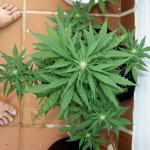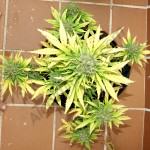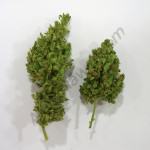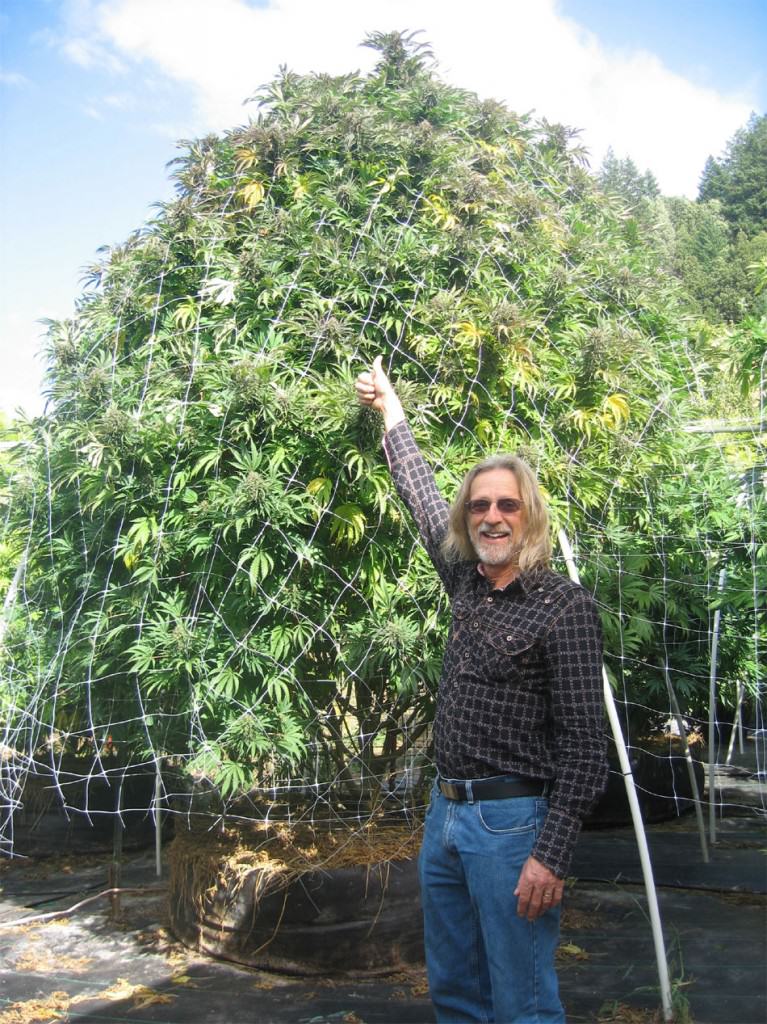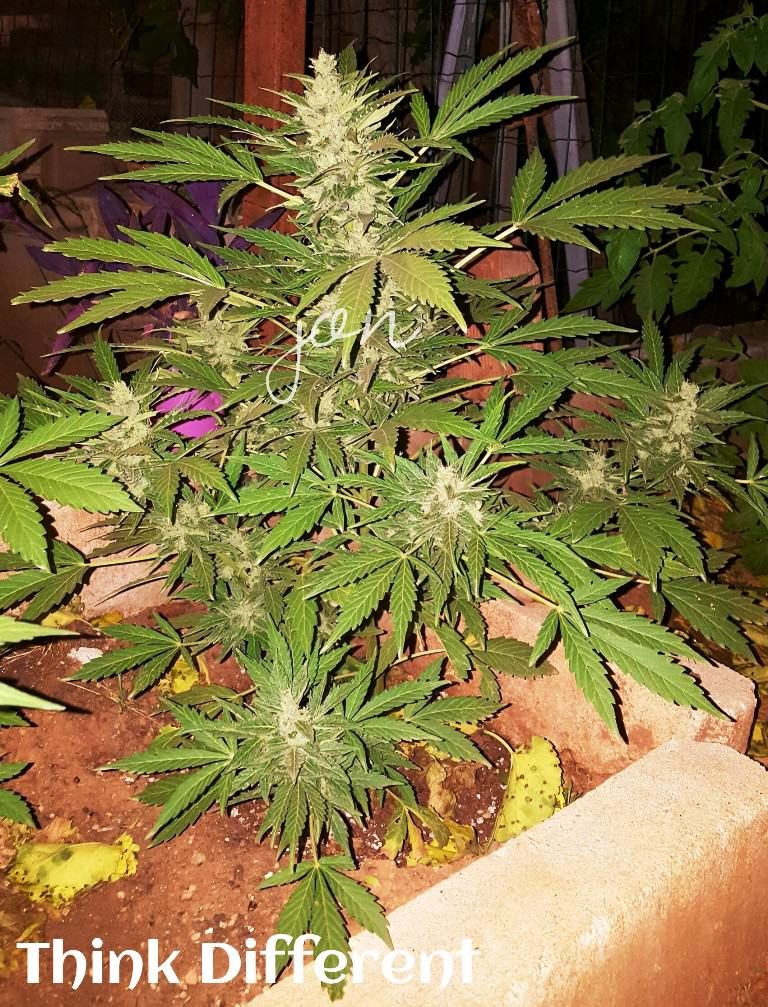Growing automatic cannabis plants outdoors in Smartpots
List of contents
Equipment, genetics and fertilisers employed
The following article details a grow report of autoflowering cannabis strains cultivated outdoors, mostly using Smart Pots. The purpose of this report is to examine their performance when used to grow auto-flowering varieties and note their suitability to the particular demands of this type of cultivation. Smart Pots encourage vigorous root development that in consequence tends to lead to bigger plants and more abundant harvests.
We grew two plants of each of 2 different varieties in order to be able to perform a comparative test. The idea was to cultivate one plant of each variety in Smart Pots of 18 litres, which would be the "main subjects," and then two more, one of each variety, in a smart pot of 12 litres and a circular rigid white plastic pot of 11 litres. So, we will be able to make a comparison between the different automatic seeds we have grown and how they perform in the different containers.
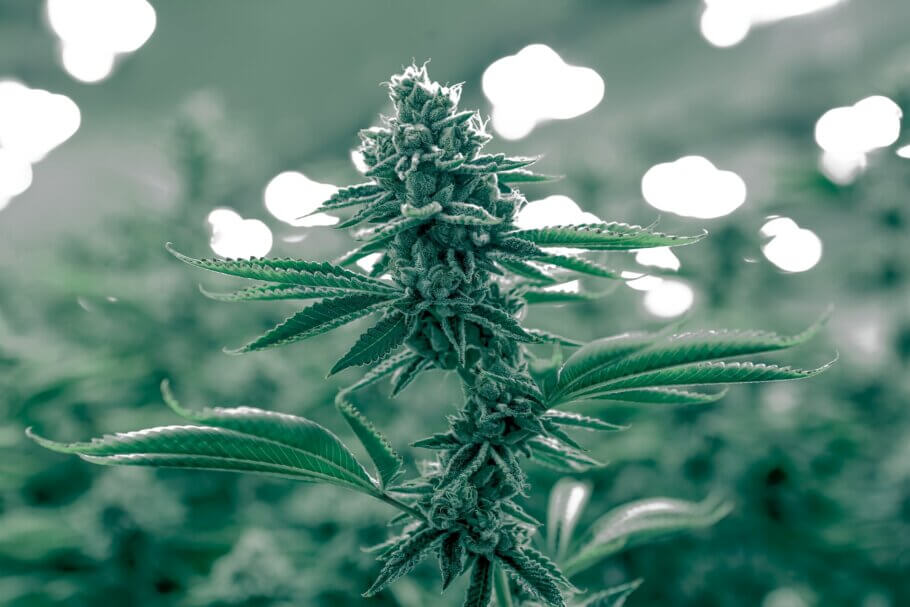
Equipment used for the crop of automatic cannabis plants
- 2x Smart Pot of 19.3L
- 1x Smart Pot 11.6L
- 1x rigid round plant white plastic pot 11L
- Soil - Bio Bizz All Mix
- Root stimulant - Canna Bio Rhizotonic
- Plant stimulant - Naturcannabis
- Growth fertiliser - Naturcannabis
- Bloom fertiliser - Naturcannabis
- Bloom booster - Atami B?cuzz Blossom Builder
- 2x seeds of Royal Cheese Auto from Royal Queen Seeds
- 2x seeds of Flash Babylon from Samsara Seeds
When growing automatic strains it's not recommended to transplant, given their relatively short life-span and the resulting delay in development that this would cause. To avoid any stress on our plants and ensure a rapid growth, we are going to plant directly in the final pot. Once we have made the shopping list and bought all the necessary products, we are ready to begin growing.
Germination and growth period
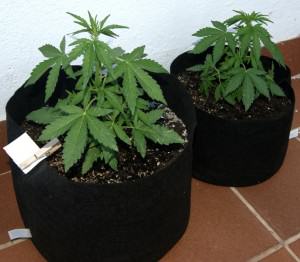
The seeds were germinated during the last week of May to take advantage of the favourable spring weather and harvest an increased yield thanks to the high intensity of sunlight in June and July.
To germinate the seeds that will be planted in the smartpot of 18l we used the paper towel method, putting them between two dishes. The other two seeds were germinated directly in the pot, at 5mm depth. After a week, all of them had sprouted and began their development without problem. After a week of true growth we began a weekly application of Bio Rizhotonic, to facilitate the development of the root. After two weeks of growth the plants were nicely developed, showing some internodes and healthy foliage.
At this point, after the third week, and upon seeing that on the plants had started to flower, we began applying fertiliser. We will use the flowering nutrient from Naturcannabis, in conjunction with the plant stimulant of the same brand. When we observed that the plant had stopped growing upwards, we ceased application of the Bio Rhizotonic.
Flowering of automatic cannabis plants
In the first and second week of flowering we first observed how the first white stigmas were sprouting from the bud sites. These were most obvious at the top of the plant, but they were also growing little by little on the secondary branches, which at the same time were developing well and increasing in length, extending horizontally to occupy all possible space.
As we can see in the photos of Royal Cheese Auto, they have quite a compact, wide and stocky structure, with 3 or 4 good-sized secondary branches in the lower part of the plant. The Flash Babylon plants grow with a bit more space between the internodes, are taller and slender, with more branching.
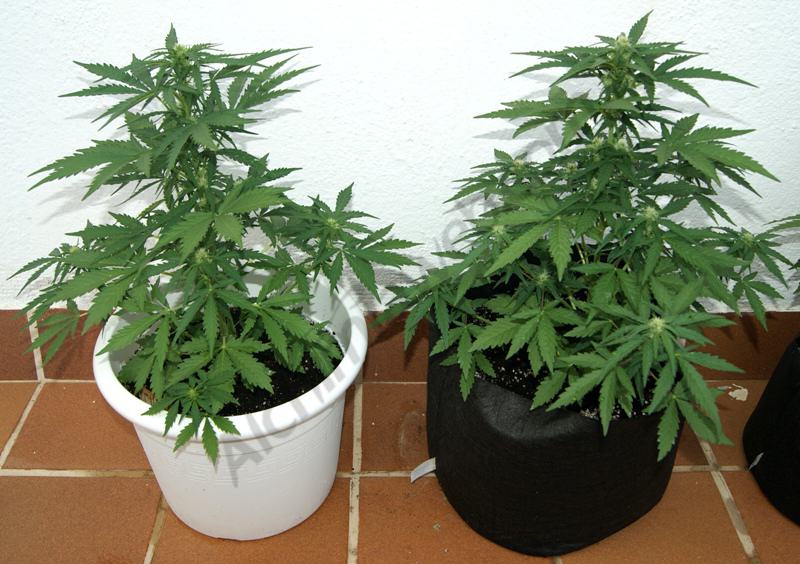
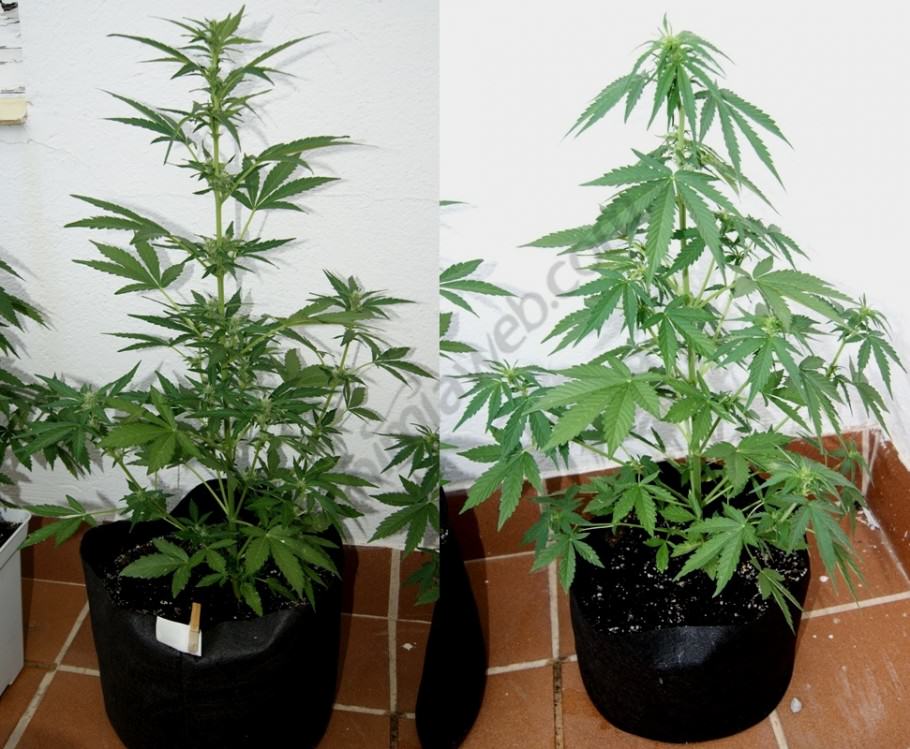
From the third week onwards, the flowering kicked in with a vengeance, visibly thickening the buds, which sprout all over the plant.
The Royal Cheese from the Royal Queen Seeds Bank was fattening mainly in the central cola. The few secondary branches also began to develop two sets of flowers, at the halfway point and at the tip.
In the case of Flash Babylon, pairs of flowers began to appear along the internodes of the main stem, and the flexible secondary branches also started to show small sets of buds at the internodes, fairly subtle, but promising all the same.

In an attempt to maximise the production weight (and to satisfy our curiosity - we can't deny it!) we decided to try a PK-type production stimulant in the form of Atami Blossom Builder during the next 3-4 weeks, always keeping within the manufacturer's maximum recommended dose. We continued applying the basic flowering nutrient and the growth stimulant 2-3 times a week, always monitoring the health and condition of the plants to avoid excesses or deficiencies.
During the 4th and 5th week, the flowers continued developing. The automatic plants from Royal Queen Seeds, took the lead and began to show great buds, especially on the main stem. The buds show a high leaf-to-calyx ratio, and will require a bit of work to trim them, but judging by the aromas it releases, the effort will be well worth it.
With the Samsara Flash Babylon, the flowers also enlarged considerably. Evidently these genetics tend towards a vertical growth, as they continued to stretch during some time after the start of the flowering phase. The flowers began to develop slowly but well, spreading throughout the plant. The structure of these plants is similar to the shape of a Christmas tree, a really nice appearance for a cannabis plant.
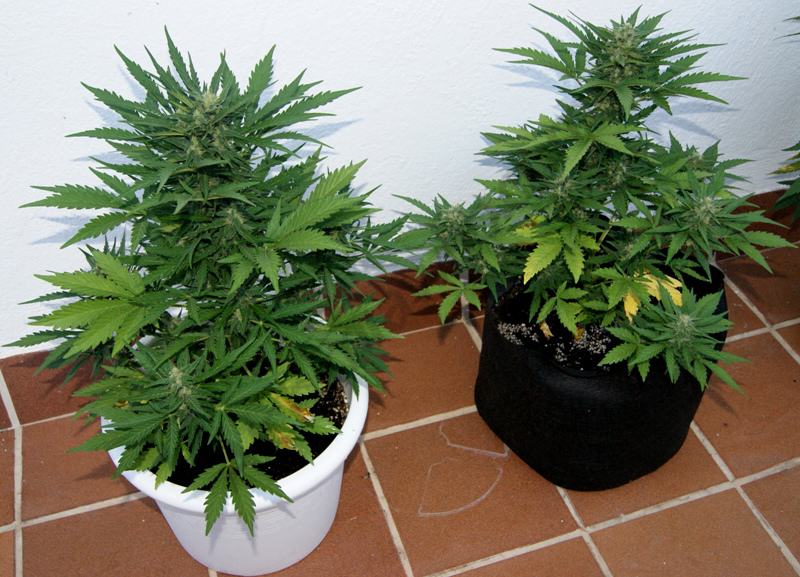

During the 6th week, things got serious! All the plants are already covered with a surprising amount of shiny and fat resin heads. This is particularly evident on both the Royal Cheese Auto, as well as in one of the two Flash Babylon plants (The two seeds gave two phenotypes, differing slightly both in branching structure and production of the buds). The second Flash Babylon phenotype also presents a high concentration of resin, but we will have to wait a little longer to see it in its full splendour.

Final stages of the autoflowering grow
This was the last week of applying nutrients, since as far as possible, we aimed to achieve the best, cleanest taste, in order to highlight the most aromatic traits of each strain. Without flushing the roots with excessive watering, we began to irrigate with water only, ensuring that the plants feed from and use up their own food reserves stored within the leaves and the buds.
At the beginning of the 7th week, the buds started to ripen and began to look very nearly ready, developing and getting fatter and denser every day. It?s good moment to start looking at the development of the trichomes, using a magnifying glass of 60x at least. On closer examination, the flowers of the Royal Cheese were as hard as rocks, with thick and very solid buds, completely covered with resin droplets. The color of the flowers was pale green, and with an unusual silvery-grey tone from the heavy concentration of calyxes, they really did look amazing!
On the other hand, the Flash Babylon?s buds are not far behind; the one grown in the Smart Pot of 18L has developed some rounded and dense flowers, fully covered with resin. The other one has produced more loose and airy buds, but in great quantity, filling all the internodes of the plant, and spreading through all the branches. With the aid of the magnifying glass we could see they were producing more resin, developing large amounts of relatively slender trichomes.
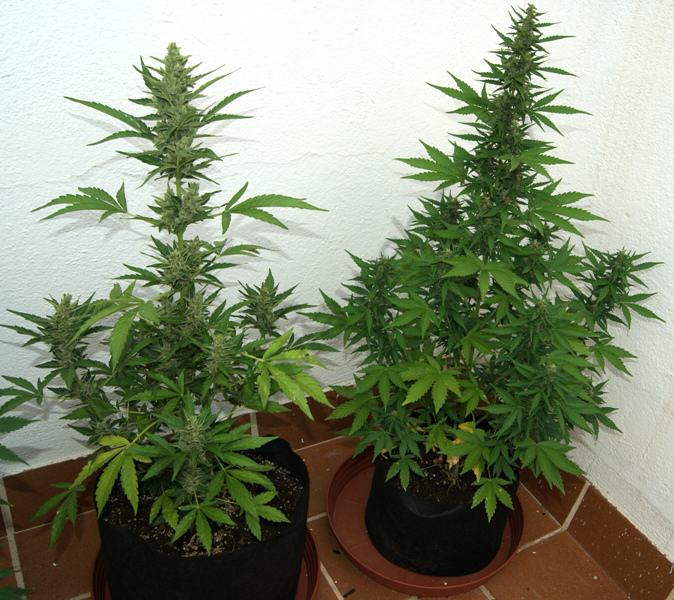
We were able to observe that, little by little, the reserves of the soil had become depleted. The plants start their flushing phase, extracting the nutrients from the reserves of the leaves. As this process happened, we watched the foliage gradually turn yellow and then brown until, at the point of harvest, the soil was exhausted of nutrients. It's important during this last phase to avoid a lack of water and not force the plants too much.
Around the end of the 7th week and at the beginning of week 8, this effect was staring to become obvious in the Royal Cheese, as you can see in the photo below. We could also see that the bud development was greater using the rigid pot of 11L in comparison with the Smart Pot of the same size. This was due to water-logged soil occurred caused by one day of unusually bad weather, followed by continual high-moisture conditions. This excess of water led to a lockout in the rootzone, stopping the plant from assimilating the correct levels of nutrients and thus preventing full development of the buds, as we can see in the photos.
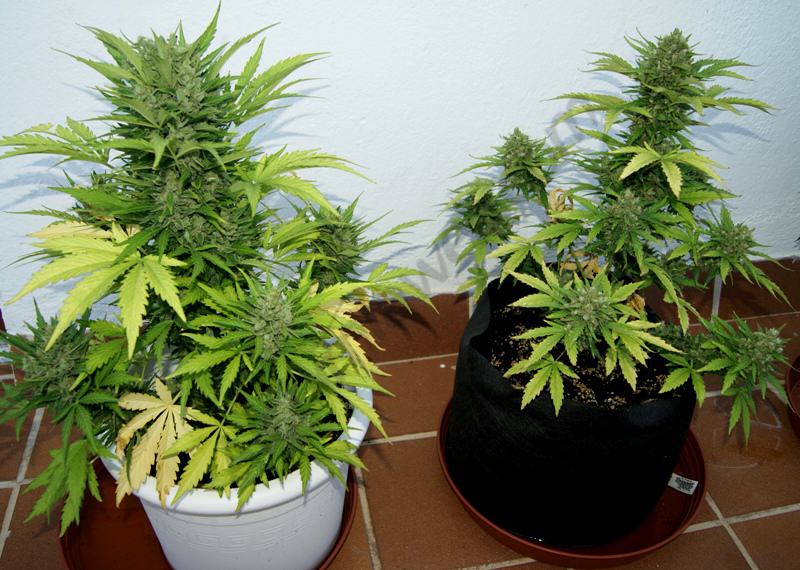
While passing from week 8 to 9, the plants look very good, almost all the leaves had turned yellow and the flowers were looking tight and beautiful. As we looked closer at the resin, we saw that the trichome heads were milky and their stalks were bent slightly, indicating that they were almost finished ripening. We weren't yet seeing any amber trichomes, but we could see that almost the half of the stigmas had become orange. We were on the brink of harvest!
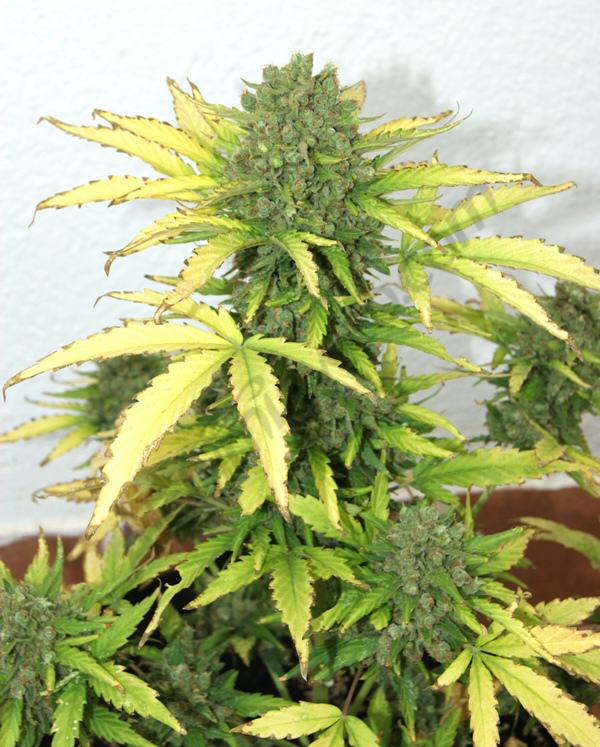
At the beginning of the 9th week trichome stalks were curved and some of the resin heads began to show amber shades, indicating that it was the right time to cut the plants. At this point we harvested the Royal Cheese Auto, while the Flash Babylons needed one week more to be fully ready.








